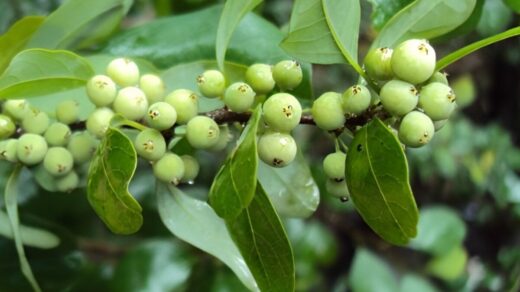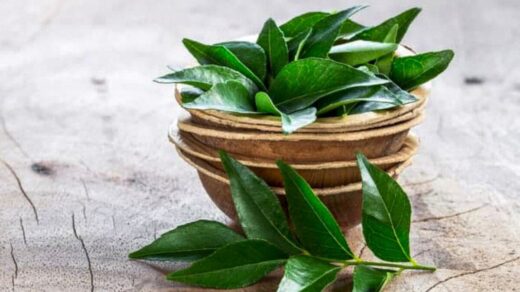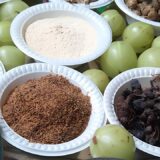Ayurveda is the art of living for several millennia, it recommends to prioritize the elimination of body toxins and to promote efficient digestion to maintain or restore equilibrium and good health.

In this modern era, we are exposed to a multitude of sources and types of pollutants such as the air we breathe, the water we drink, the pesticides and herbicides in food, the ubiquitous plastics, chemicals from our homes and so on.
In addition, many common diseases are frequently caused by overeating, such as diabetes, high blood pressure or gout, for example.
Foods that are not properly digested and metabolized cause accumulations of substances that harm the health of the body. In this context, detoxification appears as a necessary practice to maintain our vitality and quality of life.
Ayurveda is a traditional medicine that brings together therapeutic practices from India. It includes elaborate massage and body care techniques, a personalized approach to food, medicinal plants and more.
Ayurveda insists on the concept of “ama” which represents toxins and substances accumulated in excess in the body.
The science of flavors in Ayurveda
Ayurveda tells us about the effect of flavors and how they can help cleanse the body of toxins. Indian medicine insists on the importance of tasting the flavor to fully benefit from its effects, some of the effects being generated by the brain that receives the taste signal.
Among other things, spicy and bitter salivation, revive the digestive fire and accelerate the metabolism of food. The spice warms the body more while the bitter refreshes it, which allows us to choose a digestive tonic according to our personal needs.
Bitter also stimulates the liver, the main organ of detoxification of the body. Remember, you’ll lose weight a lot if you’re drinking bitter salad or sweet vinegar or lemon juice!
Examples of bitter digestive tonics
- Bitter salads: arugula, radicchio, dandelion leaves, escarole, chicory, endives
- Infusions and decoctions: burdock or dandelion root, mountain grapes
- Concentrated juices: black radish, artichoke, wheatgrass
Examples of pungent digestive tonics
- Heated spices: peppers, fresh or dried ginger, fennel, cinnamon, cloves, mustard
- Herbs: Tulsi, thyme, rosemary, Peppermint, Garlic
- Infusions and decoctions: ginger, asafoetida, tumeric
Another flavor known in Ayurveda is astringency it comes from tannins such as those found in bark and peel. These tannins recur the deposits and agglomerations of toxins while absorbing excess fat.
What herbs have medicinal properties?
Most spices and herbs are rich in antioxidants, known to prevent tissue degeneration and their ability to eliminate the free radicals we are exposed to on a daily basis.
Several accessible spices also contribute to detoxification by other means depending on their specific properties. For example, turmeric cleanses the liver and protects the brain, cinnamon activates metabolism and promotes weight loss.
While cumin and fennel reduce gas formation in the intestine and stimulate urination. Cilantro leaves, on the other hand, allow the elimination of heavy metals that are normally impossible to eliminate, such as lead and mercury.
Easy combinations:
- Chew 1 tbsp. a mixture of fennel seeds, cumin, and cardamom, consume after meals to prevent gas and bloating
- Prepare in advance a mixture of chopped fresh herbs, such as leaves of lemon balm, basil, mint, and dandelion (picked from your flower bed!) Seasoned with a little olive oil and lemon, in order to keep it for a few days and sprinkle it here and there in your meals
- Make use of barley grass juice powder, cilantro, spirulina, chlorella, wild blueberries, garlic, lemon water to eliminate some heavy metals accumulated in your body
Why medicinal plants are important?
Along with food, medicinal plants are indicated to support a process of detoxification, Although we can very well practice Ayurveda using our medicinal plants available locally, some medicinal plants typically Ayurvedic are now available in West. Among them we find:
- Triphala: a blend of three fruits that help digestion, cleanse the liver and small intestine while providing an impressive amount of antioxidants
- Neem (Azadirachta indica): cleans the blood, excels when the skin is affected by toxins
- Guduchi (Tinospora cordifolia): Works wonders to eliminate uric acid in acidic soil while supporting the liver and immunity
Ayurvedic treatments for detoxification
Ayurveda is full of treatments that contribute to a detoxification program.
- The Shirodhara: consists of a trickle of hot oil that is poured on the forehead and the “third eye” to relax the nerve functions and dislodge the toxins from the head.
- Udvarthana: stimulates blood and lymphatic circulation while exfoliating the skin, an important organ of elimination
- The Svedana: techniques of enriched sweating of medicinal herbs, this approach also allows to effectively clean the body by expelling toxins via the skin
When necessary, Ayurvedic medicine uses more radical methods to purge the body toxins: emetic therapy, purgation, intestinal enema, and nasal cleansing.
These techniques are always framed with several precautions to limit the side effects and protect the body better.
Regeneration
After a period of detoxification, Ayurveda recommends a regeneration therapy (Rasayana) twice as long. To do this, we consume foods and medicinal plants concentrated in nutrients and antioxidants while providing a period of rest and healing.
A whole branch of Ayurveda is also devoted to regenerative therapy, testifying to the importance of this step in the preservation of health.

























Thank you for the post. It was very useful.
Pharmascience is one of India’s leading brands that purely deals in Ayurvedic products. Which is a Trademark company & fastest growing in the Ayurvedic health industry in India Behind this companies ethical business strategy and quality of products which reflect customer satisfaction priorities.